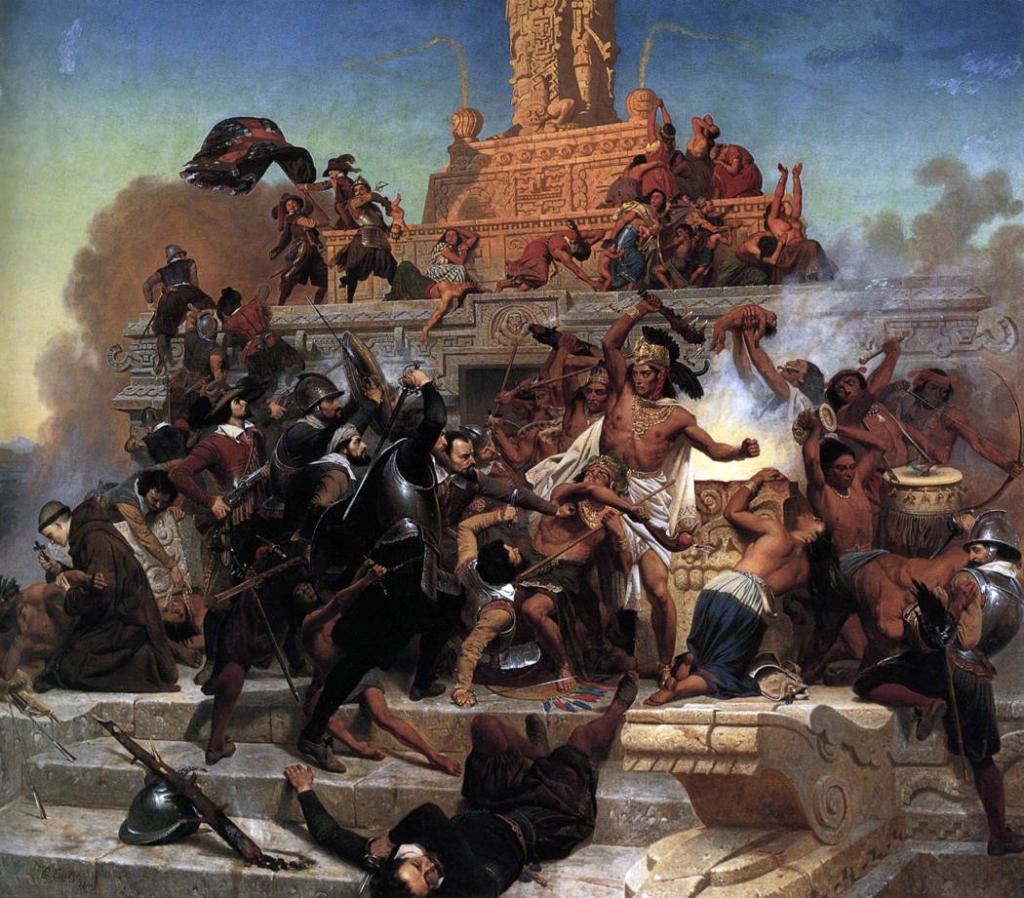Empires draw the maps of great religions. In the case of Christianity, so much is obvious if we map the major centers of population around the world. We see the ghosts of the British world, in Canada and Australia, and across so much of Africa and the Caribbean. The French, Belgian, and Portuguese empires account for other states that during this century, will become home to tens or even hundreds of millions of Christians. The Spanish and Portuguese empires drew the religious cartography of Latin America. But however obvious that imperial linkage might be, it has to be qualified on several points. It is not simply a case of “The government man says convert, so convert.” Empires came in many different shades and types, and so did their religious policies.
Compulsion and Tolerance
At a basic level, empires varied enormously in how, or whether, they demanded conversion, or even politely suggested it as a vague possibility. The Spanish followed medieval precedent in requiring that conquered subjects accept the official religion of the Catholic regime, and they did their very best to eradicate the older faiths of Mexico or Guatemala, or Peru.
But other empires acted quite differently. When Arab Muslims created their mighty empire in the seventh and eighth centuries AD, they initially made no efforts to convert their subjects, and actually made conversion difficult. The much later stereotype of demanding “the Koran or the sword!” assuredly did not apply. That did not reflect any idea of religious tolerance or peaceful coexistence. Rather, the Arab concept at that early stage was to rule as a warrior elite taking tribute from subject populations, so that each new convert represented one fewer dhimmi taxpayer. Also, non-Muslim populations – and especially non-monotheist pagans – could legitimately be enslaved in a way that Muslims could not. That fact conditioned the policies of Muslim empires in Africa well into the nineteenth century. Conversion was bad for business.
Self-interest often discouraged compulsion. At least until well into the nineteenth century, the British rulers of much of India were the East India Company, which had no interest whatever in introducing Christianity, and actively discouraged missionaries. If you read William Dalrymple’s important book on the Company, The Anarchy, the main religious impact of this rule was to pull many British elite figures into the orbit of Islam or Hinduism. A few actively converted.
The other mighty European empire in Asia was the Dutch power in the East Indies, where (like the British) they had no interest whatever in spreading Christian influences that could infuriate local Muslims, and interfere with the making of profits. Technically, also as in India, European power here was largely exercised through a private commercial company, rather than by a formal state structure.
As I noted recently, even when empires did spread religions, the kind of faith that actually was disseminated was one deeply at odds with official policies and structures.
We should also remember just how commonly around the world European empires tried to convert particular regions, and failed so badly that they left no trace. Virtually nowhere did European Christian powers manage any significant conversion of Muslim populations. We see a powerful symbol of this reality in Algeria, where cities are littered with what were intended to be the churches and cathedrals of a new Catholic order, and which today are either disused, or have been repurposed as mosques.
Hoe African Religions Lived or Died
Also, that global Christian map I imagined at the outset comprehends different kinds of population, who followed various routes to the locations where they later found themselves. European settlers who were already Christian moved to Australia or Latin America, and it was the imperial connection that decided just where they were most likely to relocate – British people to Australia, Portuguese to Brazil.
In contrast, the great African movement to the Americas was an act of brutal forced movement, undertaken under the auspices of several different European empires. Exactly which imperial power was responsible determined the later cultural, linguistic, and religious fate of those enslaved masses. It decided whether their descendants became English-speaking North American Baptists or Methodists, or Lusophone Brazilian Catholics, or French-speaking residents of Haiti or Martinique. The transatlantic slave trade was a hideous fact, and a reality. In the long run, what happened to those affected depended on the specific empire involved, its distinctive attitudes, traditions, and religious outlook. It really mattered whether the official religion of those empires was Protestant or Catholic.
Among other things, those attitudes decided just how much of the older religions survived. Historically, empires have varied in their willingness to absorb older religions and religious cultures. The Romans were wonderful at this. They would ask local people the names of their gods, decide how closely they corresponded to particular Roman deities, and immediately initiate a cult of Zeus or Hercules or Diana, coupled with the name of the local god. At first sight, the Spanish occupiers of the New World present a total contrast to this attitude, as they ruthlessly destroyed the hierarchies and institutions of the old faiths. But once this was achieved, the Spanish were almost as broad-minded as the Romans in practice. Yes, they demanded conversion. But few indeed were the customs and habits of old indigenous religions that could not be integrated into new Catholic devotions, with old deities transmogrified into saints, with the appropriate feast days. Other Catholic rulers in the New World behaved similarly.
The same remained true for imported African populations. Overtly African devotions and practices survived widely under French, Spanish, and Portuguese rule, with barely this degree of fig leaf concealment. Even specific deities and god-names persisted. Primal or Traditional religions accommodated easily to those Catholic imperial regimes. There is a neat segue from West African Voodoo to the everyday practices of slave societies in the (Catholic) New World. You can write a whole history of a West African god like Ogun in the New World, and you only have to scrape away a light patina of the Catholic saints superimposed over his original face.
The British and their American inheritors were very different, because of their Protestant assumptions, and their deep hostility to anything that could be construed as syncretism. Unlike Catholics, they did not have an abundance of intermediary sacred figures, nor an endlessly expansive ritual calendar. Both in colonial days and the national era, American Protestant missions to Native Americans practiced a scorched earth policy towards older beliefs and religious customs. (Do note the contrast with what was happening in contemporary British India, where absolute hands-off tolerance was the order of the day). Predictably, then, explicitly African-derived religions did not survive in North America in anything like the way they did in Haiti, Cuba, or Brazil, however much they might underlie above-ground religious practice. The US developed nothing comparable to Brazilian Candomble or Macumba, or Cuban Santería. American Hoodoo involves African-derived practices and traditions, but with nothing like the same explicit content of religious worship and deities. Nor does Jamaican Obeah.
The only arguable US exception to this rule is Louisiana Voodoo, which looks much more African and overtly religious than any of its North American counterparts. But Louisiana’s slave society had strongly Catholic roots, reinforced powerfully by White Catholic migrants from Santo Domingo and the Caribbean. Louisiana bore the strong imprint of older French Caribbean empires, with their particular attitudes.
African religions survived under Catholic Empires; African practices and customs survived under Protestant realms. It’s a critical difference.
In turn, African-derived patterns affected imperial societies in various ways, commonly long after formal imperial structures had ended. Of course, African religious styles surfaced conspicuously in the Anglophone world, for example through “call and response” patterns in worship, and many other aspects. But their impact went far beyond Black churches strictly defined, and influenced many White congregations.
Arguably, this happened precisely because the Protestant Anglophone world had so thoroughly pre-empted the survival or emergence of distinctively African religions on their own soil. Hence, all those spiritual and cultural impulses had to find expression through Christian churches, commonly of Baptist and Methodist origins. That African-derived influence manifested especially in the Pentecostal movement of the early twentieth century. It was easy and natural for those kinds of Pentecostal and charismatic faith to spread around the African Diaspora, and in a sense, to return to their spiritual home.
Conquest by any empire might have been a calamity. But it really, seriously, mattered which particular flag flew from the new Government House.
A couple of references to specific points in this post:
Katharine Gerbner, Christian Slavery: Conversion and Race in the Protestant Atlantic World (University of Pennsylvania Press, 2018)
Andrew Phillips and J.C. Sharman, Outsourcing Empire: How Company-States Made the Modern World (Princeton University Press, 2020).
Cécile Vidal. Caribbean New Orleans: Empire, Race, and the Making of a Slave Society (University of North Carolina, 2019).














